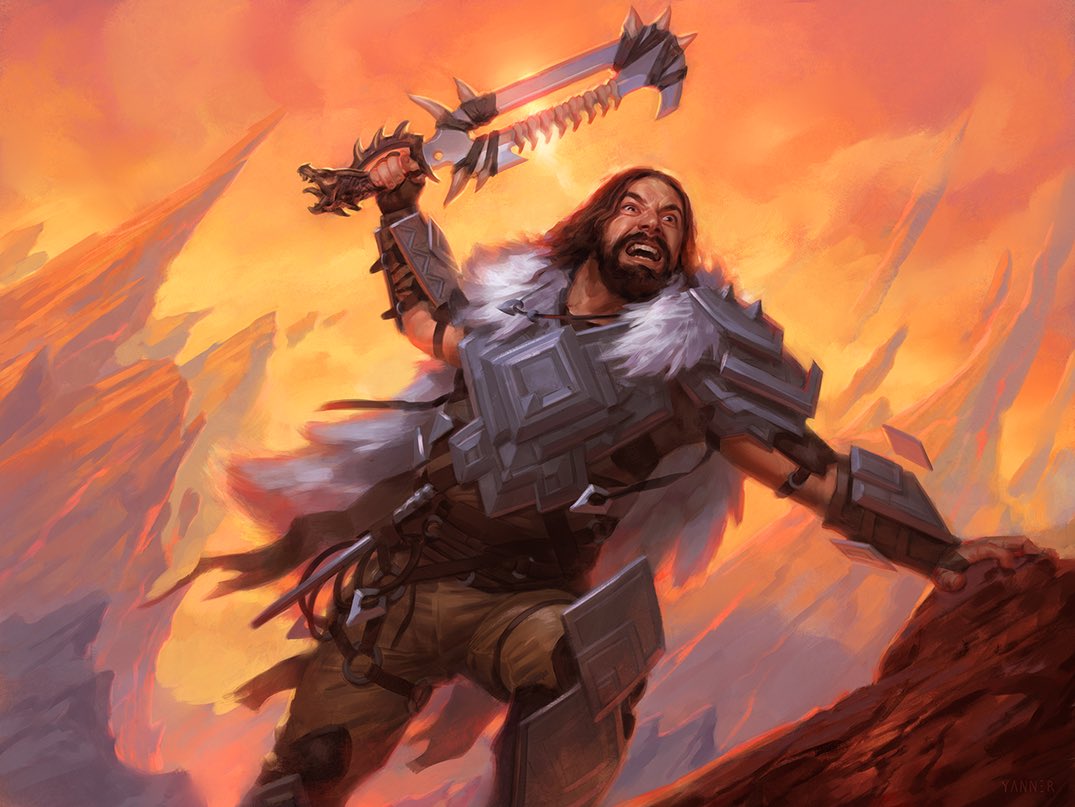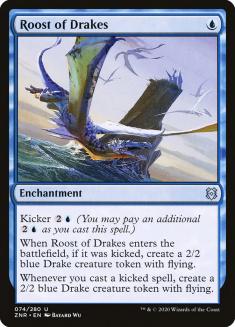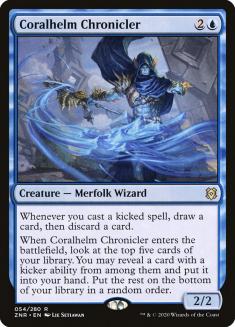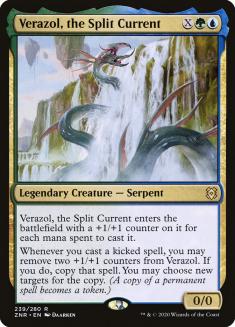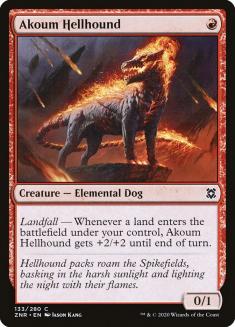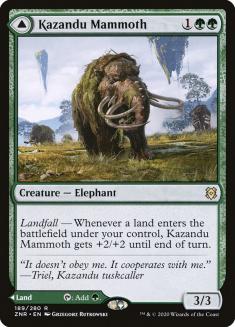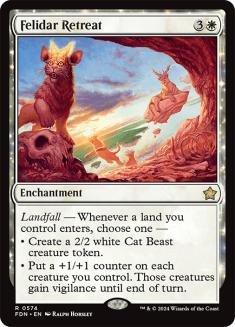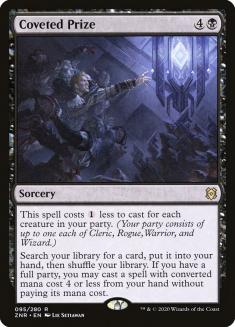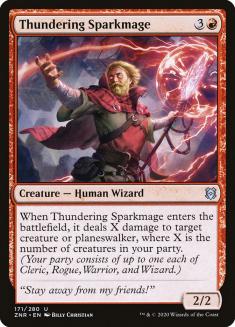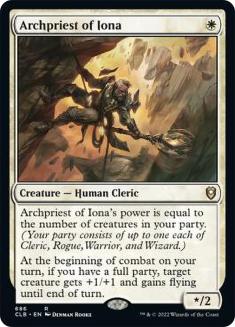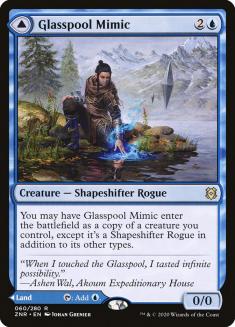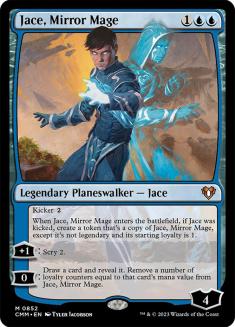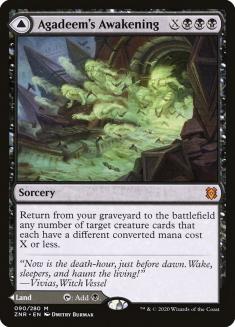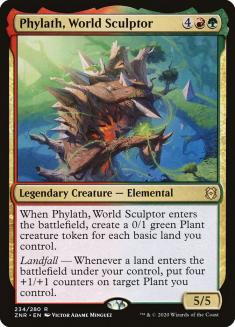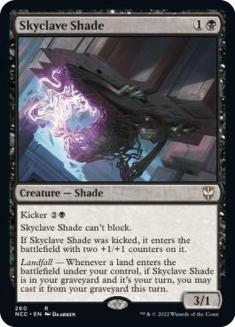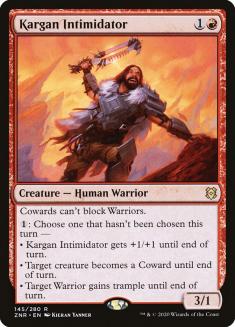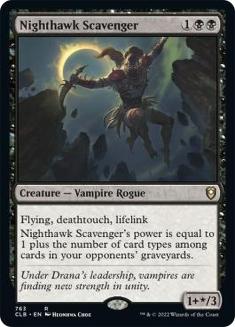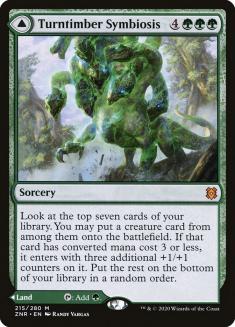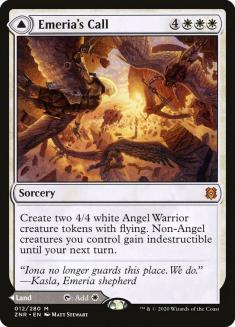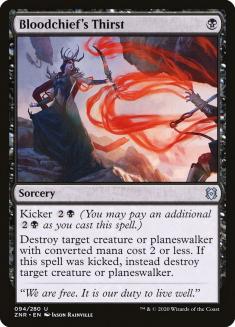We’ve all had some time to absorb Zendikar Rising at this point, and the set is really shaking up Constructed Magic in addition to offering a unique Limited environment. The set also offers a lot of interesting and powerful Cube options, which I’m grateful to say has been the norm for recent sets. Today I’m going to review some of the unique things that Zendikar Rising has brought to the table for Cube draft as well as offer my picks for the ten most impactful Cube cards from the set.
Kicker Matters
Kicker was first introduced twenty years ago in Invasion block, and since then the mechanic has been revisited several times. When the mechanic showed up in Dominaria two years ago there were a small number of cards that referenced getting benefits when other cards were kicked, and this trend continues in Zendikar Rising.
Kicker as a mechanic presents a lot of interesting decisions around when you’re supposed to cast your spells, and it’s cool to see some mechanic cohesion added to support the possibility of a kicker deck. Currently the support is a little scattered and there aren’t enough kicker cards to make a full Cube that’s all about kicker, but I’m hoping that one day there will be, and I think there’s already enough stuff to support kicker as a minor theme. Perhaps in a Cube based largely around modal spells.
Landfall
Landfall is back again and offers plenty of cards on par with the landfall offerings from original Zendikar. The landfall cards in Battle for Zendikar mostly fell flat, and it’s exciting to see the mechanic pushed back up a notch.
The lack of fetchlands in Standard makes these cards less appealing for Constructed than they would have been at other times, but the beauty of Cube Draft is we get to combine them with their most powerful potential synergies. Akoum Hellhound may just be a color-shifted Steppe Lynx, but it’s a playable one-drop with landfall, and that efficiency is a huge factor in fleshing out themes.
There’s tons of support for landfall as a Cube theme at this point in Magic‘s history, and Zendikar Rising‘s additions are most welcome.
Party
Party made its debut in Zendikar Rising as a tribal mechanic that cares about multiple creature types. I’ve really enjoyed booster draft around assembling a party, though the mechanic is fighting uphill in terms of Cube Draft given how difficult it is to assemble a party and how few cards serve as payoffs for successfully doing so.
Even still, I think that party is an extremely cool and resonant mechanic, and I hope that we see more support in the future. I’ve already started work on a Party Cube and I think that an environment with tribal underpinnings centered around combat offers a pretty rich drafting and play experience.
My expectation and hope is that we’ll see more support for the party tribes in the coming year, and I’m excited to see where party goes. I’m probably better known for my Grixis Cube, but when a new set is being previewed I get more questions about potential includes for my Innistradian-themed Cube that I dubbed the “Spooky Cube.” People love asking whether specific cards are spooky or not, and I imagine that new Clerics, Wizards, Rogues, and Warriors will raise questions like, “Can this creature party?” in a similar vein. The mechanic has an aesthetic appeal that’s difficult to capture.
Modal Double-Faced Cards
Finally, we come to what has already revealed itself to be a pretty game-changing mechanic, and what is in all likelihood the first thing that will come to mind when we think back on Zendikar Rising later. Modal double-faced cards (DFCs) are just a really powerful mechanic, and I’m peppering some into all of my Cubes.
Spoiler alert, some of the cards on my top ten list are modal DFCs. But even beyond specific cards, I really like putting any modal DFC that has a spell side close to something that your Cube would consider into your list. Some Cubes include Fling or would if the card didn’t only work in very specific situations, and Kazuul’s Fury just offers much more satisfying play patterns. Modal DFCs with generically good effects are going to be excellent in Cube, and I firmly believe that including some of the less efficient and more narrow options will lead to a smooth and fun experience.
Without further ado, let’s get down to the ten most impactful individual Cube cards from Zendikar Rising.
10. Glasspool Mimic
I have a soft spot for Clones. I think that a version of Glasspool Mimic that cost a mana or two extra and could copy opposing things would have ended up being my favorite card from the set, but even only being able to copy your own things leaves plenty of utility for Glasspool Mimic. Combining Frost Titan with Phantasmal Image and Phyrexian Metamorph is a strategy that I often employ in high-power environments, and the ability to play Glasspool Mimic as a land to make sure you get to Frost Titan mana is very welcome in these sorts of decks.
I think Glasspool Mimic is a fair amount worse than Phyrexian Metamorph due to only being able to copy your own things, but Phyrexian Metamorph is an all-time Cube great. That’s not a reasonable bar to try to clear.
Glasspool Mimic is going to be right at home in any Cube that features Birthing Pod, and realistically fits well into any environment that’s heavy on value creatures. Even creature-light strategies that employ a small number of value creatures will get plenty of mileage just from the option to copy cards like Eternal Witness or Torrential Gearhulk, which is a lot of upside to get from a card that takes up a land slot in your deck.
Blue is often the hardest color to make cuts from in a Cube, but Glasspool Mimic is definitely worth a look.
9. Jace, Mirror Mage
Jace, Mirror Mage is a little bit easier to contextualize than Glasspool Mimic, as the card naturally draws a comparison to Jace Beleren. They have the same casting cost, they both more or less exclusively draw cards… they’re both Jace.
I’ve only played a few games with Jace, Mirror Mage at this point, but as of now I’m committed to replacing every Jace Beleren in one of my Cubes with Mirror Mages. The kicker ability makes the card a much better draw in the late-game, and barring some unlucky hits on the 0 ability I find the cards to be extremely similar on Turn 3.
The biggest point of contention between the two cards will come from how gaining one loyalty to scry two compares to gaining two loyalty to have each player draw a card. I really don’t want to get into the nonsensical conversation around valuing some amount of scrying as some amount of a card, but I would much rather just scry than give up a card to my opponent in order to draw.
8. Agadeem’s Awakening
Sacrifice decks have gained a lot of tools in the last year or so, which is evidenced by their success in both Standard and Historic. There are tons of moving parts for these decks for Cube in terms of sticky creatures, sacrifice outlets, and cards that reward you for sacrificing creatures like Blood Artist.
These decks tend to involve a good amount of setup and have some vulnerabilities against spot removal, but Agadeem’s Awakening is a potent tool for smoothing out their draws. Gruesome Menagerie is a card that I previously looked at for sacrifice themes, but you just end up playing a lot of games where you don’t get full value out of the card. Agadeem’s Awakening cleans this up a lot by just being a land.
Agadeem’s Awakening isn’t going to hack it in formats like Legacy Cube that feature more powerful effects like Recurring Nightmare, but it’s a great option for less abstractly powerful and more synergy-driven environments.
7. Phylath, World Sculptor
A lot of players are comparing Phylath, World Sculptor to Avenger of Zendikar, establishing that the card seems worse and leaving it there. Being two colors, only getting a Plant for basic lands, and going tall versus going wide are all generally going to be downgrades. I agree with this evaluation, but I still think there is plenty to discuss here.
Phylath being a mana cheaper than Avenger demonstrates that it can still be worth inclusion despite being worse than Avenger, and I actually think that Phylath being a Gruul card is a relevant point in its favor in high-powered environments.
Gruul has a serious identity problem in Vintage Cube. Think about it: what is the best Gruul card ever printed? Ancient Grudge? What does a good Gruul deck even look like in Vintage Cube? A red beatdown deck that randomly has mana acceleration or a green ramp deck that randomly has creatures that attack and block? Phylath complements Dragonlord Atarka in helping Gruul decks gain identity as midrange decks with some mana acceleration and some interaction by offering a solid threat at the top of the curve for this sort of deck.
Gruul still has a bit of an identity problem with red aggressive decks and green ramp decks largely pulling players in opposite directions in Legacy and Vintage Cube, but that’s a topic for another day and Phylath is a step in the right direction.
6. Skyclave Shade
In terms of abstract power level, Skyclave Shade is likely worse than both Bloodghast and Scrapheap Scrounger. Both of these cards are incredible though, and this is a good conversation to find yourself in.
Black has a serious historical problem in terms of Cube design when it comes to the costing of its creatures. There’s just a lot of stuff on two that costs BB and stuff on three that costs BBB. It’s neat and flavorful in some ways, but these costs can be really hard on the mana of even two-color decks. If you’re trying to facilitate two-color aggressive decks in your Cube, then I think there’s a real argument to include Skyclave Shade over Bloodghast in terms of castability alone.
Skyclave Shade doesn’t have a relevant creature type like Zombie or Vampire, which makes me a little sad, but it’s otherwise a huge boon to black aggressive strategies.
5. Kargan Intimidator
I remember when Blade of the Sixth Pride was first printed in Future Sight. It was wild to see a two-mana 3/1 printed. Now it’s pretty well established that this is a safe stat line for a white creature, and a few abilities have been tacked onto that body over the years.
When it comes to red creatures though, Kargan Intimidator is really pushing the envelope. Lightning Mare is cool, but impossible to cast. Rimrock Knight has the Adventure upside, but can’t block. Kargan Intimidator is just easy to cast and has multiple relevant abilities.
This card is just obviously good on rate and also comes with two relevant creature types in Human and Warrior. Kargan Intimidator is going to be a Cube staple for years to come.
4. Nighthawk Scavenger
On the topic of good rates and Cube staples for years to come, Nighthawk Scavenger is honestly kind of bonkers. Vampire Nighthawk is a solid card in any environment that’s at all about combat, and Nighthawk Scavenger is basically always going to be slightly larger than its predecessor.
Vampires have a solid amount of Cube support as far as tribes go, and Nighthawk Scavenger is also a Rogue if you’re into that sort of thing. I have my reservations about the new Rogues and mill as a Cube mechanic, but prowl was a cool mechanic and I’m a big Notorious Throng fan.
Nighthawk Scavenger doesn’t necessarily fit into environments where the black decks are combo decks like Storm and Reanimator, but it’s one of the most aggressively costed creatures of all time in terms of attacking and blocking.
3. Turntimber Symbiosis
Now we’re on to a card that is a big deal for Vintage Cube. Despite my general preference for Grixis, I draft the green decks in high-powered Cubes a lot. There’s something viscerally satisfying about killing people with Craterhoof Behemoth and using Plow Under to put people in the ground before they can get started.
One of the best cards in the green decks in Vintage Cube is Green Sun’s Zenith, and the recent addition of Finale of Devastation has proven to be a significant upgrade for these decks as well. Cards that work as mana acceleration or haymakers are huge boons for the consistency of these decks.
If I had to rank Green Sun’s Zenith, Finale of Devastation, and Turntimber Symbiosis in terms of power level in Vintage Cube, my best guess would be that Turntimber Symbiosis is better than Finale but worse than Zenith, but I could see Symbiosis proving to be the best of the lot over time.
The green decks generally try to play light on lands, and using Green Sun’s Zenith or Finale of Devastation to find a Llanowar Elves or some other mana creature is often a scary proposition given the opponent’s ability to destroy your mana source. Just playing Turntimber Symbiosis as a land in these spots to guarantee your ability to get up to Nissa, Who Shakes the World mana will be huge.
Turntimber Symbiosis is also cool in that it scales really well with your environment. It’s only as good as the creatures that it might hit, which makes it an instant Cube staple across any power level.
2. Emeria’s Call
I expect Turntimber Symbiosis to win more games on resolution than Emeria’s Call, so it might be weird to see me rank Emeria’s Call higher. The reason for that is simple. In discussing Turntimber Symbiosis there are historical comparisons and it’s interesting to determine which of those options is the most powerful. Which white cards do anything quite like what Emeria’s Call does?
I firmly believe that Emeria’s Call is one of the most powerful white cards of all time. A card that can be a game-ending threat or a land is the sort of modality that white just doesn’t see with any kind of regularity, and it’s the perfect fit for white control decks in Cube. I often draft Azorius control decks that kind of want to play eighteen lands to help ensure they never miss land drops but that also need a steady stream of spells. Emeria’s Call fits those shells like a glove.
At seven mana, Emeria’s Call likely doesn’t do much of anything for the mono-white aggressive decks in Vintage Cube that are always open, but it’s an immediate staple for basically any other white deck.
1. Bloodchief’s Thirst
It’s not flashy. It’s not a huge effect. It’s just a pure, efficient one-for-one. Bloodchief’s Thirst invites some unfavorable comparisons against Fatal Push in Constructed, but it actually comes out way ahead in turns of Cube play.
A lot of black removal in Cube has this issue where it’s good against one type of deck and bad against another. This can be due to a restriction on the types of creatures they kill or on the card types that they interact with. As long as your opponent is playing creatures or planeswalkers worth destroying, you’ll always want Bloodchief’s Thirst. It’s good against Goblin Guide. It’s good against Jace, the Mind Sculptor. The range of cards that this is true of is incredibly narrow.
Clean one-for-ones against most strategies are actually among my favorite Cube cards. You’re always happy to play cards like this and by definition they’re not broken. Trading one-for-one and jockeying for position is just good, clean Magic that leads to compelling and engaging games.
Black is supposed to be the removal color, but white and red actually tend to have the best removal options for Cube play. Bloodchief’s Thirst is a huge win for black, and it’s a great fit for the overwhelming majority of Cubes.

